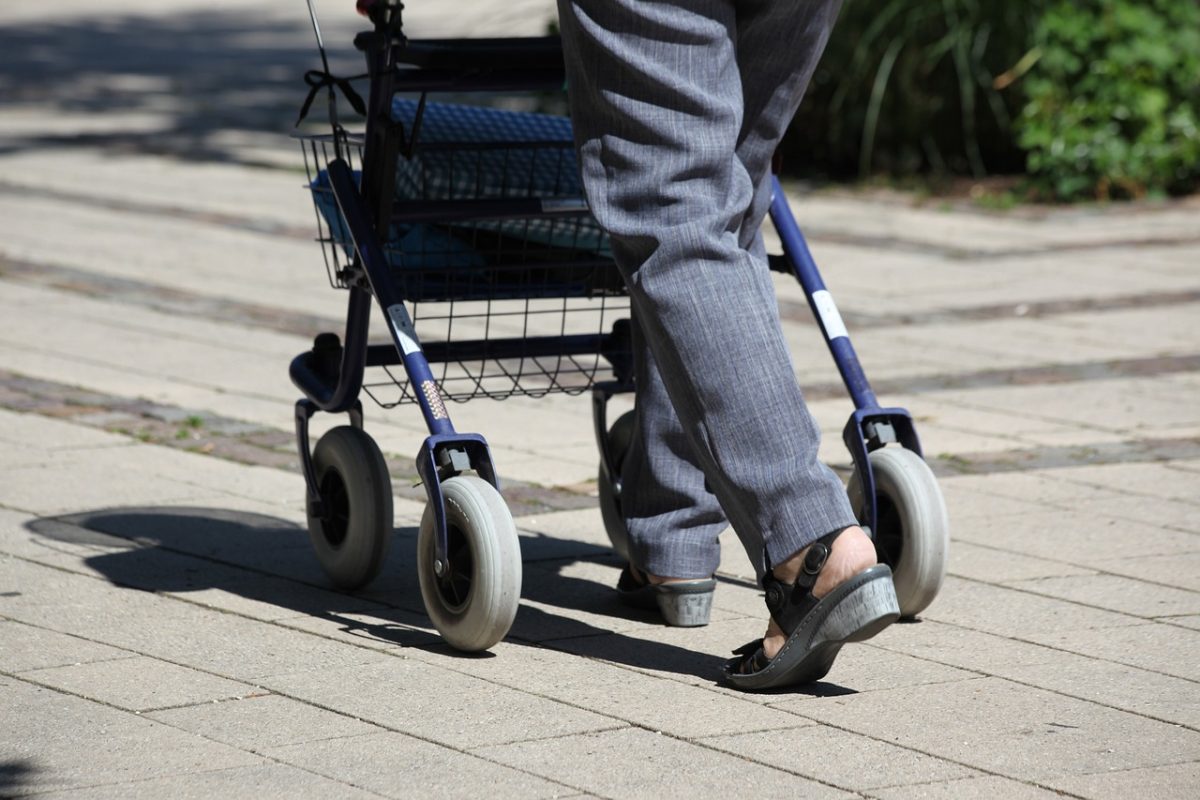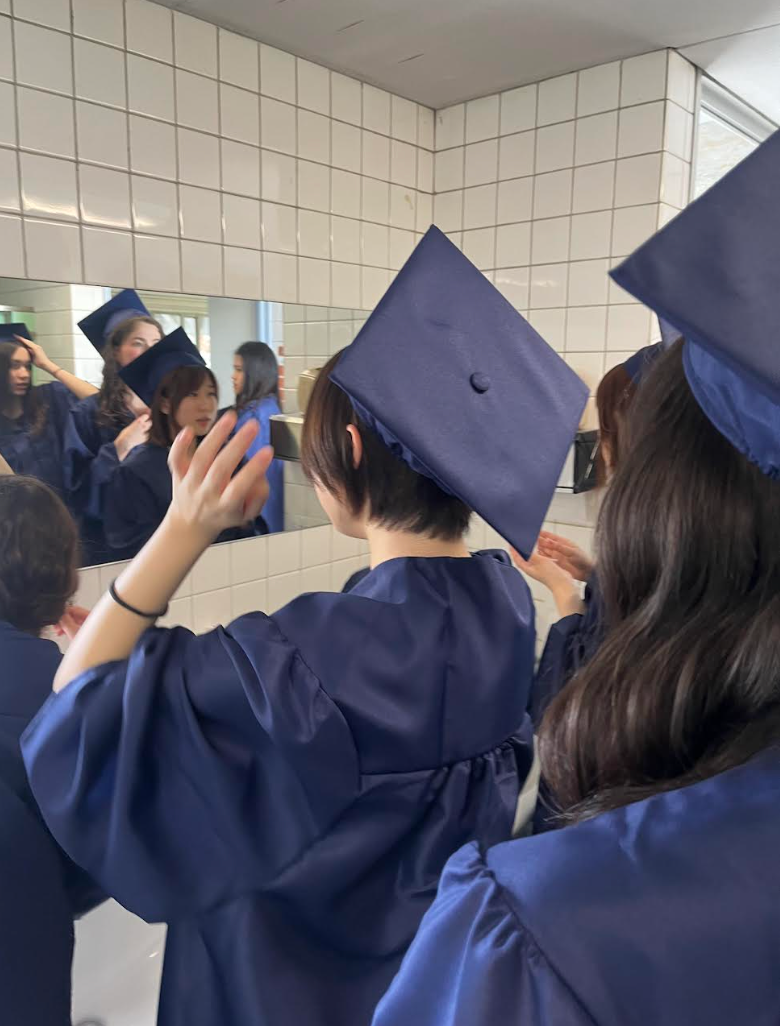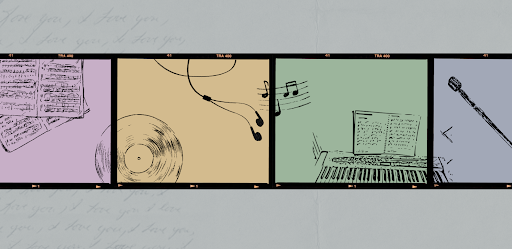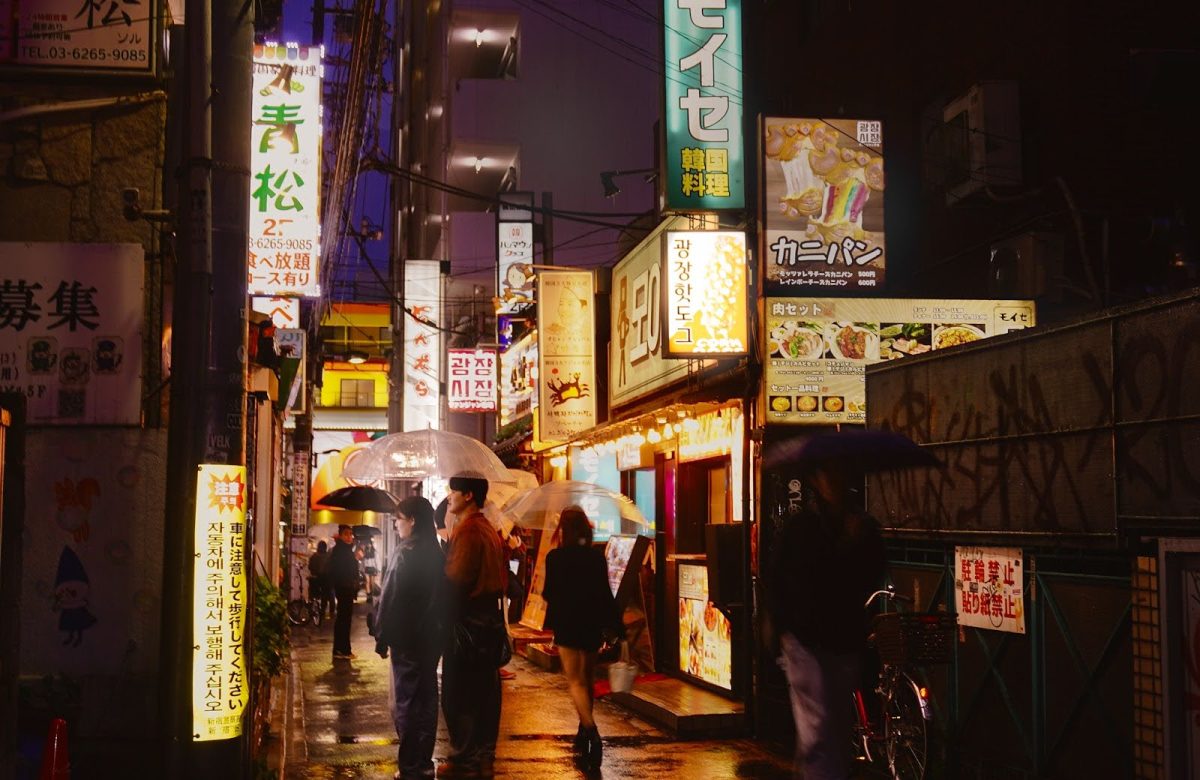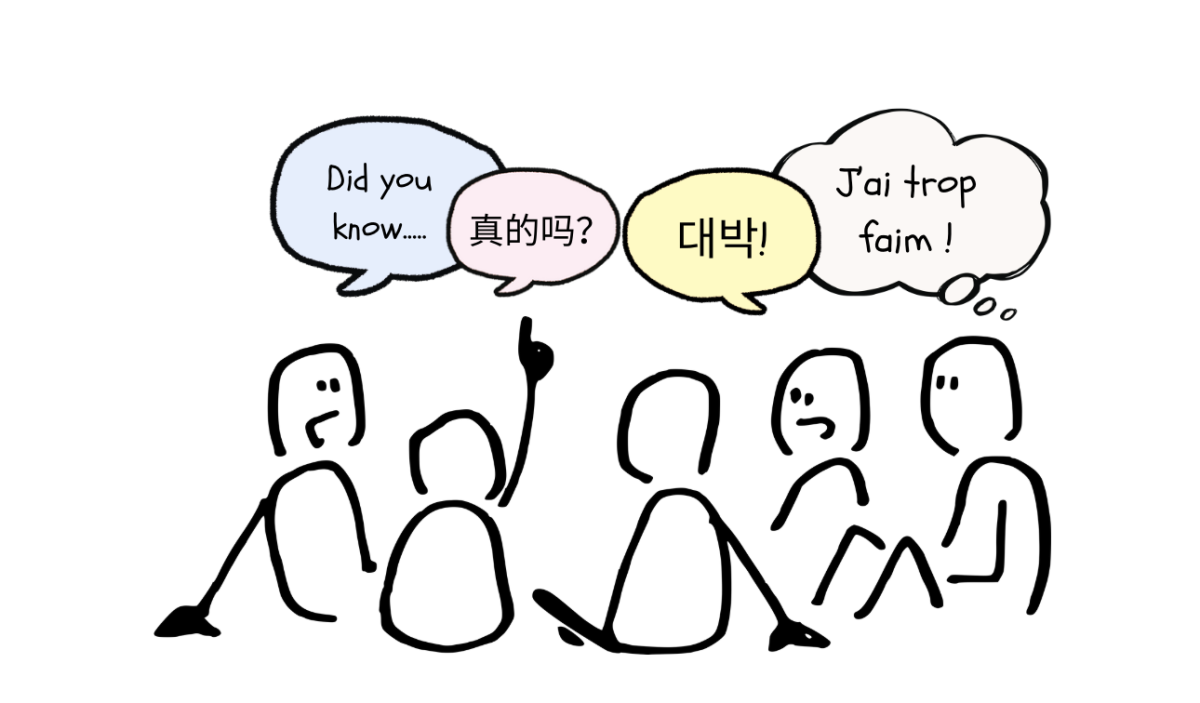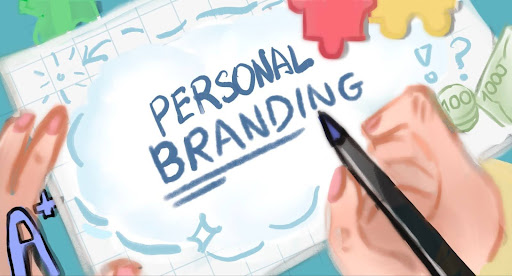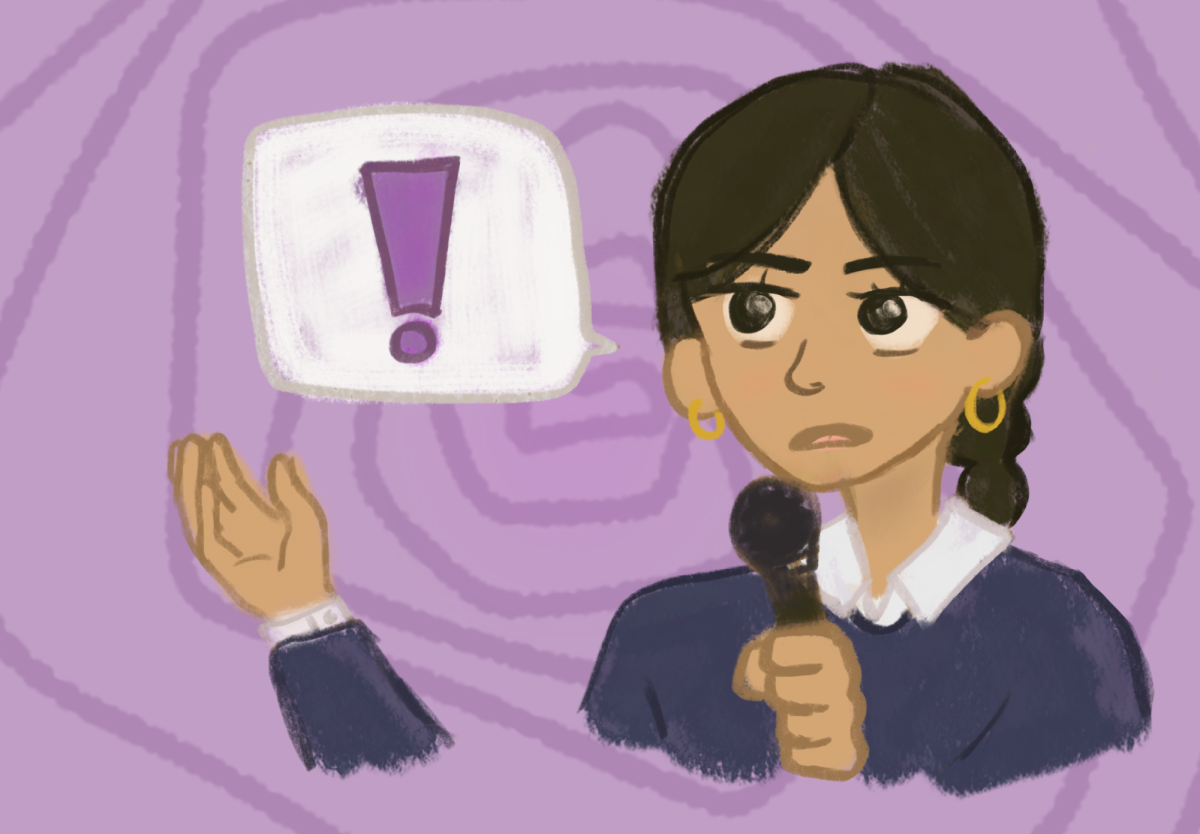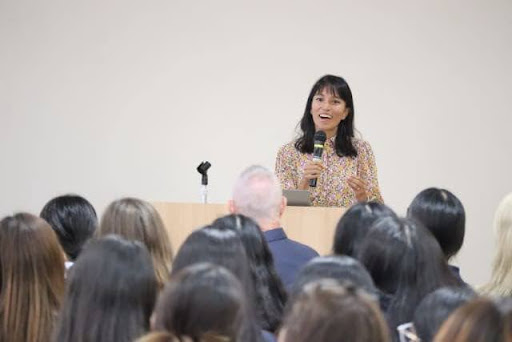It’s midnight in the heart of Tokyo, and the streets are crowded, flooded with the electric glow of neon lights. The blasting signs of clubs and bars reflect off the shimmering asphalt ground, contrasting with the towering Godzilla silhouette. Amidst the glamour of hosts and hostesses, several teenagers stand out, out of place, disconnected from the sparkle of the city. Unlike normal children, the youth and sparkle are viewed with desperation, sitting in the streets along with bottles of alcohol and packs of cigarettes. Some make their way to the drug store to purchase OTC drugs, excited to release stress, yet with dull eyes, unaware that this practice will soon evolve into a deadly habit: Tokyo adolescents overdosing on cold medicines in the shadow of the ‘city that never sleeps.’

Kabukicho, Shinjuku’s largest nightlife district, is perpetually filled with foreigners drawn to its various bars and tourist attractions, starting with the iconic red entrance gate to the recently built entertainment center, Kabukicho Tower. Known for its reputation as a “red-light” district, it houses the largest number of host clubs, hostess clubs, and other sex-oriented businesses. However, in recent times, when the locals hear the name Kabukicho, it evokes a different association, the “Tōyoko kids”. The “Tōyoko”(“Tō” abbreviation of the TOHO, “yoko” Japanese term of “next”) kids are adolescents based in front of the TOHO cinema in Shinjuku, mainly consisting of junior high and high school students. Despite the majority being minor, they are often seen with alcohol and cigarettes, staying until midnight. These kids vary in why they stay “tōyoko” from struggles with family relationships, school environments, or just out of curiosity. Aoi Shimizu, a representative of Nippon Kakekomidera, an organization based in Kabukicho that supports people in a wide range of struggles, from Tōyoko kids to victims of domestic violence.
As a person who sees Kabukicho on-site, Shimizu believes the number of Tōyoko kids has been increasing and states that social media has greatly impacted it. Shimizu states, “I believe social media’s influence is significant. Recently, platforms like TikTok and X have contributed to the flow of people from rural areas to Kabukicho. They see posts about kids with similar circumstances, underage drinking, smoking, or dancing videos, and they start to think that if they go to Kabukicho, they can have a fun life and that things might work out somehow. As a result, many children end up flowing into the area.” Every night, 30-40 Tōyoko kids gather around in their designated area, some of them just communicate among themselves, others conduct illegal acts, including underage drinking and underage smoking. As the clock turns to eleven, multiple Shinjuku police officers come in to bring the kids back to their homes or to the welfare center. Shimizu states, “Probably, they talked with a police officer and explained how they ended up in this situation. If they are a minor, they are sent back home. I believe it’s up to the police to decide whether it’s safe to return them home, but if returning home would put them in more danger, the child welfare center might be contacted. The police decided,” On the other hand, the kids who got away will stay in Kabukicho all night, “depending on the children. Some stay in internet cafes or cheap hotels with multiple people, splitting the cost among themselves. Some kids stay in karaoke.”

However, at one point, the number of Tōyoko kids drastically decreased due to the COVID pandemic. During the emergency declaration in 2020, they were forced to stay in their houses, increasing the risk of kids in dangerous situations, triggering the deadly trend. As the COVID restrictions loosened, Tōyoko kids began to return to their “second home”. Kabukicho continues to conduct illegal acts, underage drinking and smoking, but adding a new trend, overdose of OTC drugs, particularly cold medicines. Since the COVID pandemic, the overdose trend emerged from the Kabukicho area, especially among the kids, now becoming a common association with the Tōyoko kids. Shimizu believes post-COVID was the primary cause of this trend, stating, “The post-COVID period had an impact. The environment changed gradually after being stuck at home and living in an emergency. People were told they could leave the house and take off their masks. There might be a kind of backlash or a sense of release from the restrictions that have had a significant effect on behavior.” The misuse of cold medicine among the Tōyoko kids varies, Shimizu states, “they use it as a self-harm, like cutting wrists, for example. When children experience temporary unpleasant situations, such as being mistreated, dealing with accumulated stress, or having thoughts of wanting to die, some of them want to forget their negative feelings. On the other hand, others enjoy the floating sensation or the drunk-like state that comes from the drugs (such as medicon, the common cold medicine used by Tōyoko kids, which contains dextromethorphan (DXM), could trigger dissociative phenomena in a case of misuse). Some do it because everyone around them is doing it, and they feel that they need to do it too to get ‘high’. The reasons for overdosing vary from person to person, but these are the main reasons.”
As is well known, overdosing on drugs causes countless health issues and ultimately leads to death. Meghaan Okutomi, a school nurse at the International School of Sacred Heart, explains the increased cost of drug overdosing in young adults. Okutomi states, “When they’re younger (under 25), the frontal lobe isn’t developed as much, therefore they have a higher risk of being addicted easily. In addition, it leads to a higher risk of mental health disorders. Not being able to learn coping strategies at a younger age could affect how you cope when you’re younger, so it could lead to unhealthy coping behavior in the future.” Okutomi’s analysis on the danger of drug misuse has already been seen in Kabukicho through the multiple deaths of adolescents due to overdose symptoms.
Social media has also been the key driver of this deadly wave, with the recent posts on X under #Tōyoko, numerous identical images of adolescents exposing their tinted blue tongue have become viral. This overwhelming trend is due to a sleeping pill, which has a blue tint on the inside of the medicine to avoid any incidents or misuse. This drug is one of Tōyoko kids’ preferred drugs, which many of the participants are found with a dark colored blue tongue, as Shimizu has also experienced seeing it multiple times in Kakekomidera. Shimizu notes, “For example, ‘Silece,’ a sleeping pill, is a prescription medication, so you can’t get it unless you have a prescription from a doctor. However, kids who go to psychiatric clinics can get it by telling their doctors. If you take too much Silece, your tongue can turn blue, and some kids started uploading photos of their blue tongue on Instagram and other social media, making it a trend or a sort of status symbol.”
With the massive increase in the number of overdosing Tōyoko kids in Kabukicho, some drug stores in Kabukicho have set a limit on the number of medicines they can buy and added several restrictions before the purchase to confirm that it is not for misuse. The government reacted to this trend with the Ministry of Health, Labour and Welfare strengthening the policy on the purchase of cold and cough medicine. Minors, under the age of twenty, are prohibited from purchasing multiple packs of drugs, and even with small amounts of purchase, they are required to record necessary information — name, age, and information regarding drug abuse. In addition, they only permit purchases in stores or online through video or voice communications, according to Asahi Shinbun. However, despite this tightening restriction among pharmacies, Shimizu believes they won’t work effectively in stopping this deadly trend. “Despite having limits on the number of medicines they could purchase, ultimately, it doesn’t change the situation. Even if a pharmacy sets a limit of three items, if they go to another pharmacy, they can buy another three. The children quickly share information, so they know which store has what, or which worker is kind, and they work together to buy the drugs. They may also buy from adults in Kabukicho. There are many ways to get them. No matter how many rules a pharmacy puts in place, the reality is that it doesn’t make much of a difference.” Okutomi also agrees, adding the restrictions will only put a “band-aid”, not remove the “root cause of overdosing”.
While it is true that some Tōyoko kids do participate in illegal acts and overdosing, it is important to remember that they are not necessarily “bad kids”. As Okutomi mentioned, there is always a “root cause of overdosing” that drives them to go to Kabukicho and eventually leads them to conduct such actions. Shimizu stated, “Many of the children who come to Kabukicho have some kind of background,” with some having experienced parental abuse or bullying, among other challenges. This is why Kabukicho becomes essential to them, a kind of “second home” where they can connect with others who share similar experiences and obtain a sense of belonging they often cannot find in a conventional society. Often, this tragic side is less reported in the mainstream media and more focused on the negative sides, such as overdosing and illegal actions. This is why most societies are prejudiced against these adolescents and refuse to see their point of view.

As a representative of Kakekomidera, watching and interacting with countless kids in Kabukicho, Shimizu addresses the increasing prejudice among the kids. “In the media, they are often categorized as one, but from what I see, not all are bad kids. The reason is that these kids come to Kabukicho from all over Japan, which requires a lot of courage and the ability to take action. They calculate the transportation costs and figure out how much they need to save to get to Kabukicho, which requires some planning and initiative.”
Over the past few years, these “second-home” or “comfort places” have been increasingly common. These places are also referred to as 界隈, “kaiwai”, a term originally meaning a neighborhood or a specific area, but which has since evolved to refer to a community with shared beliefs or ideas. Aside from Kabukicho, these “kaiwai” have ventured to Osaka (aka Gurishita kaiwai, which refers to “under the Glico Sign in Dotonbori”), Fukuoka (aka Kego Kaiwai, which refers to “community in Kego, Tenshin, Fukuoka), and Omiya, Saitama. Disappointingly, these new communities inherit the negative side of Kabukicho, conducting illegal activities including underage drinking, smoking, and prostitution, along with the misuse of cold medicine.
To address the misuse of OTC drug trend among Tōyoko kids, Shimizu, echoing Okutomi’s earlier point, emphasizes the importance of focusing on the “root causes”: the backgrounds and individual circumstances of each child. “Every child’s background (for overdose) is different,” she explains, “ so it’s essential to listen to them and help reduce the frequency of drug use. Once they start, it’s hard to stop because addiction sets in, and quitting suddenly is very difficult.”
Shimizu stresses the importance of acknowledging that their challenges and painful experiences could likely turn into a need to escape. “Most of them are very capable and responsible. Although they are often treated as troublesome or bad, the reality is that these kids are here because of various backgrounds in their families and schools. If you look at each one individually, many of them are good-natured, and that’s the reality.”




